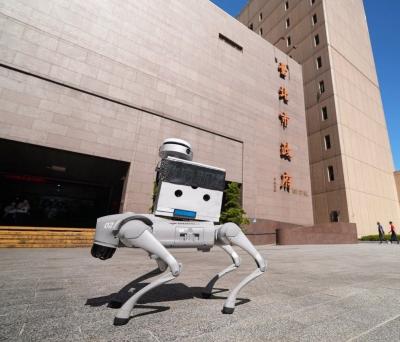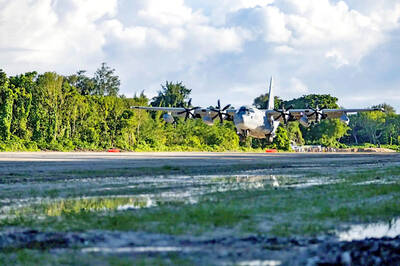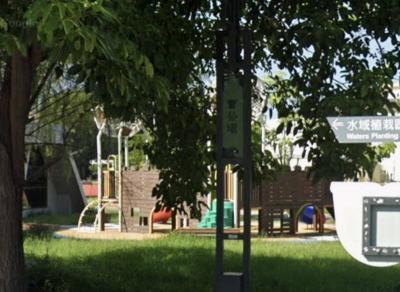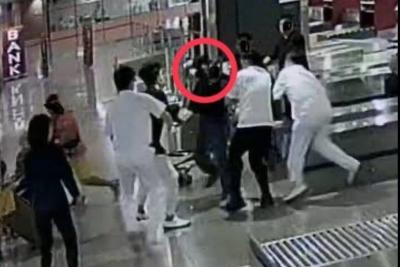In light of the threat posed to the Greater Taipei region by Chinese missiles, the military has said additional Patriot missile bases are needed in the region, on top of the three already in place, in order to ensure the protection of Taiwan’s political, military, and economic centers.
The China Military Power Report, released by the Ministry of Defense in September, said that the number of ballistic and cruise missiles which China’s Second Artillery Corps has aimed at Taiwan increased from 1,400 last year to more than 1,600 this year.
Currently, there are three Patriot missile bases in the Greater Taipei region — Wanli (萬里), Nangang (南港) and Sindian (新店) — which the military says serve to blunt any potential missile strikes against Taipei by Chinese forces.
The anti-ballistic capability of the Patriot missiles, as well as the long-range radar station located in the area which boasts a detection range deep into Chinese territory, would provide the Taipei region with an effective “umbrella” against missile attacks, the military said.
Pointing to the increased capability, accuracy and mobility of the People’s Liberation Army’s (PLA) Second Artillery Corp — as well as its increased deployment of Dong Feng-16 missiles [the newest mobile missile in the Chinese arsenal, capable of striking targets from a distance of 1,000km] — a Taiwanese general, who declined to be named, said the military had concluded that the anti-missile “umbrella” would need an additional surface-to-air anti-ballistic missile base.
Saying the location of the base was classified for reasons of national security, the military declined to comment on its planned whereabouts.
With the latest plan, the military is shifting its surface-to-air missile coverage ratio from that outlined by the administration of former president Chen Shui-bian (陳水扁) at 3:2:2 — in respect of missile bases located in the north, central and southern regions of Taiwan — to a new 4:2:1 ratio.
The previous administration had promised to set up missile bases in central and southern Taiwan to offer better protection to the Greater Taichung and Kaohsiung regions, nominating six ideal locations for the establishment of the missile bases, the general said.
After President Ma Ying-jeou (馬英九) came to power in 2008, economic woes took priority, forcing the ministry to aim for a first-phase establishment of four new missile bases — one in the north, two in the Greater Taichung area, and one in the Kaohsiung-Pingtung area, the general said.
The Chen administration had been focused on a balanced distribution of missile bases — a focus slightly more political than strategic — the general said, adding that the military’s current focus was based on the “level of threat” faced by various regions.
That focus helped to determine the priority of the establishment of new missile bases and is a decision based on overall strategic thinking.
“It is not placing the north over the south, nor is it favoring the pan-blue over the pan-green region,” the general said.
Political demographics in Taiwan traditionally demarcate northern Taiwan as more supportive of the pan-blue camp and southern Taiwan as more sympathetic to the pan-green camp, which is why the general sought clarify the matter.
Reached for comment, Ministry of National Defense spokesman Major General David Lo (羅紹和) said it was standard ministry practice not to comment on military deployments and declined further comment.

The inspection equipment and data transmission system for new robotic dogs that Taipei is planning to use for sidewalk patrols were developed by a Taiwanese company, the city’s New Construction Office said today, dismissing concerns that the China-made robots could pose a security risk. The city is bringing in smart robotic dogs to help with sidewalk inspections, Taipei Deputy Mayor Lee Ssu-chuan (李四川) said on Facebook. Equipped with a panoramic surveillance system, the robots would be able to automatically flag problems and easily navigate narrow sidewalks, making inspections faster and more accurate, Lee said. By collecting more accurate data, they would help Taipei

TAKING STOCK: The USMC is rebuilding a once-abandoned airfield in Palau to support large-scale ground operations as China’s missile range grows, Naval News reported The US Marine Corps (USMC) is considering new sites for stockpiling equipment in the West Pacific to harden military supply chains and enhance mobility across the Indo-Pacific region, US-based Naval News reported on Saturday. The proposed sites in Palau — one of Taiwan’s diplomatic allies — and Australia would enable a “rapid standup of stored equipment within a year” of the program’s approval, the report said, citing documents published by the USMC last month. In Palau, the service is rebuilding a formerly abandoned World War II-era airfield and establishing ancillary structures to support large-scale ground operations “as China’s missile range and magazine

A 72-year-old man in Kaohsiung was sentenced to 40 days in jail after he was found having sex with a 67-year-old woman under a slide in a public park on Sunday afternoon. At 3pm on Sunday, a mother surnamed Liang (梁) was with her child at a neighborhood park when they found the man, surnamed Tsai (蔡), and woman, surnamed Huang (黃), underneath the slide. Liang took her child away from the scene, took photographs of the two and called the police, who arrived and arrested the couple. During questioning, Tsai told police that he had met Huang that day and offered to

A British man was arrested for attempting to smuggle 14.37kg of marijuana into Taiwan through Taiwan Taoyuan International Airport, Taipei Customs said late yesterday. The man, who arrived from Bangkok at 9pm on Friday, was asked by customs officers to open his luggage during a random inspection, Taipei Customs said in a news release. The passenger, whose identity was not disclosed, refused to open his suitcase and tried to flee the restricted area. He was eventually subdued by three customs officials and an Aviation Police Bureau officer. A later search of his checked luggage uncovered 14.37kg of marijuana buds. The case was handed over